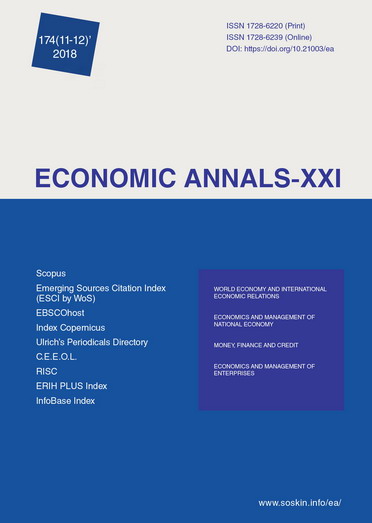Efficiency of the banks: the case of the Visegrad countries
Efficiency of the banks: the case of the Visegrad countries
Author(s): Radovan Dráb, Kristína KočišováSubject(s): Financial Markets
Published by: Institute of Society Transformation
Keywords: Window Data Envelopment Analysis (DEA); Intermediation Approach; Malmquist Index; Commercial Banks; Banking; Return to Scale Effect; Technical Efficiency; CCR; BCC; Visegrad Countries (V4);
Summary/Abstract: The purpose of the paper is to measure the technical efficiency of domestic commercial banks in the Visegrad countries (V4) by using non-parametric Data Envelopment Analysis (DEA) and estimate the efficiency change in the banking sector. We apply an input-oriented window DEA model with a constant and variable return to scale to investigate the technical efficiency of commercial banks’ deposits to loan the transformation process. The input-oriented model was evaluated using CCR (a measure of the overall technical efficiency) and BCC (a measure of the pure technical efficiency). The model results provide recommendations for managers in managing banks to increase their effectiveness in the analysed group of banks. The analysis is focused on the 2005-2016 period, since the banking went through massive structural and regulatory changes and was affected by the 2008 financial crisis during this period. To obtain the best research results, we considered three sub-periods (2005-2008; 2009-2012; 2013-2016). The growth of the banking market, as well as the development of the economy, has led to changes in the technical efficiency. Therefore, the last part of this paper is focused on the determinants of the efficiency changes relating to individual sub-periods identified by using the radial Malmquist index under the condition of constant return to scale. The results point to the fact that the positive efficiency change during the 2005-2008 period was primarily due to the innovation and technological growth, while during the 2009-2012 and 2013-2016 periods it was mostly impacted by progress in the efficiency change due to improved operations of management and return to scale effect. Taking into account the results of the BCC model, which overcome the assumption that banks operate under the condition of their optimal size, we can see that the leading position was reached by the Hungarian banking sector, whose average pure technical efficiency was 78.83% during the whole analysed period. The Czech Republic ranked second, with the average pure technical efficiency equal to 68.63%, the third one was Poland (60.52%), the last one was the Slovak banking sector (58.32%). Data relevant to the years 2018 and 2017 were not available at the time of the analysis, therefore the authors present only a trend of future development. Data provided by the European Central Bank which are partially available for 2017 suggest that the development described by the analysis results with the use of the DEA models covering all the three sub-periods will have an increasing trend with digressive slope.
Journal: Економічний часопис - ХХІ
- Issue Year: 174/2018
- Issue No: 11+12
- Page Range: 34-42
- Page Count: 9
- Language: English

